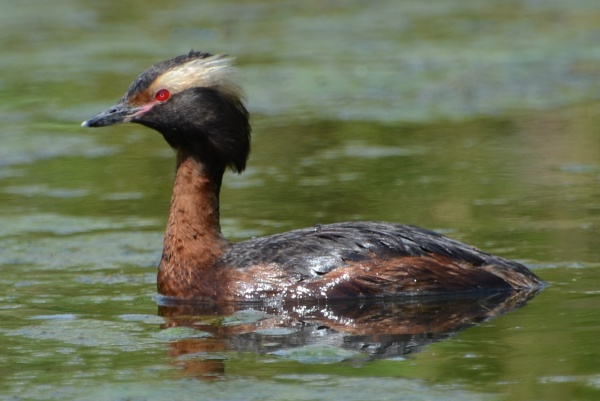Facts About Horned grebe
The horned grebe, also known as the Slavonian grebe, is a small waterbird belonging to the Podicipedidae family. It has two subspecies: P. a. auritus, found in the Palearctic region, and P. a. cornutus, which resides in North America. This bird is easily recognizable by the distinctive "horns" behind its eyes.
In terms of appearance, the horned grebe boasts striking red-and-black plumage during the breeding season and black-and-white plumage outside of it. It also has a straight, pointed beak with a white tip. These birds can be found across northern Europe, the Palearctic, and North America.
Horned grebes have diverse breeding grounds. The Eurasian subspecies breeds from Greenland to China, while the North American subspecies breeds primarily in Canada and parts of the United States. They favor shallow freshwater ponds, marshes, and bays with abundant emergent vegetation, which they use for nesting and protection. During migration, they make stopovers at lakes, rivers, and marshes, and in winter, they can be found in marine environments or on large lakes.
These birds exhibit fascinating behaviors. They are vocal, feed on aquatic prey, and have elaborate mating rituals. Horned grebes are monogamous and engage in pair bonding ceremonies before mating. They typically lay three to eight eggs, with both parents taking turns incubating them. Once the hatchlings are born, both parents care for them until they can swim and dive independently.
Unfortunately, the horned grebe population is declining globally, primarily due to human disturbances, habitat loss, water level fluctuations, and other environmental issues. As a result, the species is classified as "vulnerable." Conservation efforts are underway to protect these birds, with various plans and research initiatives in place to address the threats they face.

 Canada
Canada